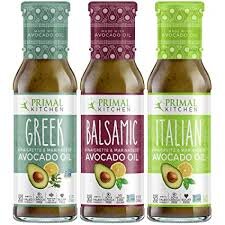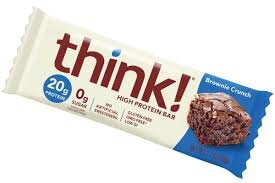It’s a pretty well-known fact that we don’t need sugar to survive. We don’t gain any essential minerals, vitamins, or fats from sugar. Here are 4 easy ways to lower your sugar today.
1) Less sugar in your coffee
How much sugar do you add to your coffee? The powdery white stuff is easy to spot but let’s talk about creamer. The average creamer has 5g of added sugar per tablespoon. Whoa, that really adds up when you consider that most people don’t just add one tablespoon. Question, do you like the taste of coffee or do you like creamer with a little coffee? I understand, I like milk alternatives in my coffee and there is no way I will be giving up my oat milk cappuccino anytime soon.
At home: Easy transition is to start lowering the amount you put in or get out a tablespoon and measure and then take away a little bit each day until you reach your desired amount. Measuring is a true eye-opener for me.
Recipe: Cashew milk is the creamiest and easiest to make. 1 cup of cashew nuts, soaked overnight in water. Strain. Add 4 cups water and blend on high for one minute. Store in the refrigerator.
At the store: Search for lower sugar products and try them out. We are lucky that alternative options are in abundance now. If you can tolerate dairy, switch from creamer to half-and-half or whipping cream. If you can’t tolerate dairy, Oat and cashew milk are my favorite. They are the creamiest and best for frothing. While the milks at the store don’t always have the best oils in their milks, it is a alternative to making it at home. Plus, you can find these alternatives out and about quite frequently.
If you are used to a mocha or adding chocolate to your coffee, Further Foods has a chocolate reishi mushroom + collagen peptide powder that is amazing. Blends well with milk and coffee plus gives you all the benefits of collagen and reishi mushrooms.
2. Less sugar in your condiments
Have you flipped the bottles of condiments over lately? Ketchup, mayonnaise, BBQ sauce, relish, or salsa. Sugar can add up quickly when you glaze over the amount hidden in our everyday condiments. I was in complete shock the first time I realized how much added sugar is in ketchup. When I was younger, I swear I used veggies as a vehicle for ketchup. Not to say that you should live a life without BBQ chicken but there are options for less sugar.
Ketchup- 4 g per 1 tablespoon
BBQ sauce- up to 16g per 2 tablespoons
Relish- 4 g of added sugar per serving
At home: Flip over your bottles of condiments and look to see how many grams of sugar or added sugar in your products. Look at the list of ingredients, is sugar the first, second, or third ingredient? Do you know all the names of sugar to identify them? There are over 98 names for added sugar.
Use a measuring spoon when needed to know exactly how much you are consuming and dispose of any products you are not wanting to consume.
Learn to make your favorite condiments at home. It will take a few ingredients and time to learn but worth it in the end. We have a local brunch spot that sells their homemade ketchup and whoa, it is so worth it. You could always look for a local, small business to support.
No-Sugar Ketchup
6 oz Tomato Paste
1 cup water
3 tbsp apple cider vinegar
¾ tsp onion powder
½ tsp garlic powder
¼ tsp paprika
¼ tsp black pepper
¼ tsp mustard powder
1 tsp sea salt
Whisk all ingredients together and simmer for 30 minutes until thickened to your liking.
At the store: Flip over your bottles and jars. Yes, this is time consuming, at first, but it will get easier and faster. You will quickly find companies that are trying to use honorable ingredients and less sugar in their products.
Primal kitchen has great options. They have ketchup, barbecue sauce, and steak sauce.
Be aware that some of the sugar-free options then add artificial sugars which DO NOT help lower blood glucose levels, in the long run. They can negatively impact your digestive tract and gut bacteria.
3) Less sugar in your salad dressings and salad toppings
Here is another one that quickly gets out of control. How much salad dressing do you use? The recommended servings or more? And how much sugar is in the toppings of dried cranberries, candied walnuts, and crunchy croutons?
Dried cranberries- 17 g of added sugar per ¼ cup
Glazed walnuts- 11g of added sugar
At home: Use less! That’s the first tip. I remember my favorite salad used to be spinach with glazed walnuts, dried cranberries and honey balsamic dressing. No wonder! Think veggie toppings for replacement or addition. Cucumbers, tomatoes, radish, carrots, mushrooms, avocado, and onions. For dressing, consider the way you “toss” your salad. Put your toppings and lettuce in a bowl with a lid, place the lid on top and give it a good shake. This is a more effective way to SPREAD the dressing you are using.
Apple Cider Vinaigrette
1/3 c Apple Cider Vinegar (I like Bragg’s)
1/2 c avocado or olive oil
3-4 tsp dijon mustard (I like a more mustard-y taste)
1 tsp garlic, minced
salt and pepper to taste.
OXO sells a great dressing shaker- they have a big and small. I use the big one at home and use the small one for travel, work or going to a friend’s house.
At the store: Look for the added sugar and the type of oil used in the dressing you typically buy. There is a reason why there is a big price difference among salad dressings. It can be found in the ingredient list.
Primal kitchen makes a few of my favorites, including, ranch and Caesar. Tessemae’s and Bragg’s makes great dressing, too.
4) Less sugar in your snack bars
One of the most popular items, in the last few years, has been the increase in snack bars, granola bars and protein bars. In a world of convenience, they rank somewhere up at the top. The problem is that they can be loaded with fillers ingredients, added sugar, on top of which, they have caused a big problem for teeth by causing cavities (That’s just a side note from my hygiene world.) So where can you find the 1) convenience 2) shelf-stable 3) great flavor that are gained from throwing a snack bar in your bag?
At home: Your best bet is to split the bar in half. Remember your body can only handle 5g of sugar at a time so splitting it in half can help to bridge to gap between leaving work and arriving home to get dinner started or get you through the one-hour gym class you wanted to attend. Trust me, I have used them often at work because trying to eat an apple and almond butter on a 10-minute break is not always feasible. Do you have access to a refrigerator? Sliced nitrate-free turkey rolled up with cheese or in lettuce can provide protein and fat. Add a container of mixed nuts to your work station or drawer for easy access when you need a snack.
At the store: Buy mixed nuts instead. When you eat a protein bar you are, of course, trying to get protein but most of the time you are buying “time or fuel” to get to your next meal. I typically see clients use them as a snack. The fat and protein in a handful of mixed nuts is going to get you further without your blood sugar spiking from the additional “fillers”, or even dried fruit sugars, in premade bars.
If you need to buy bars, here are a few of my favorites: Think Thin, Oatmega and GoMarco bars. Look for less than 5g of sugar per bar or serving.
Sugar is everywhere and it can easily sneak into our routine and it adds up quickly! Learning more about the products you use daily will help you make decisions to lower sugar. I challenge you to look at labels. Need help? Don’t be afraid to ask.
Enjoy!













